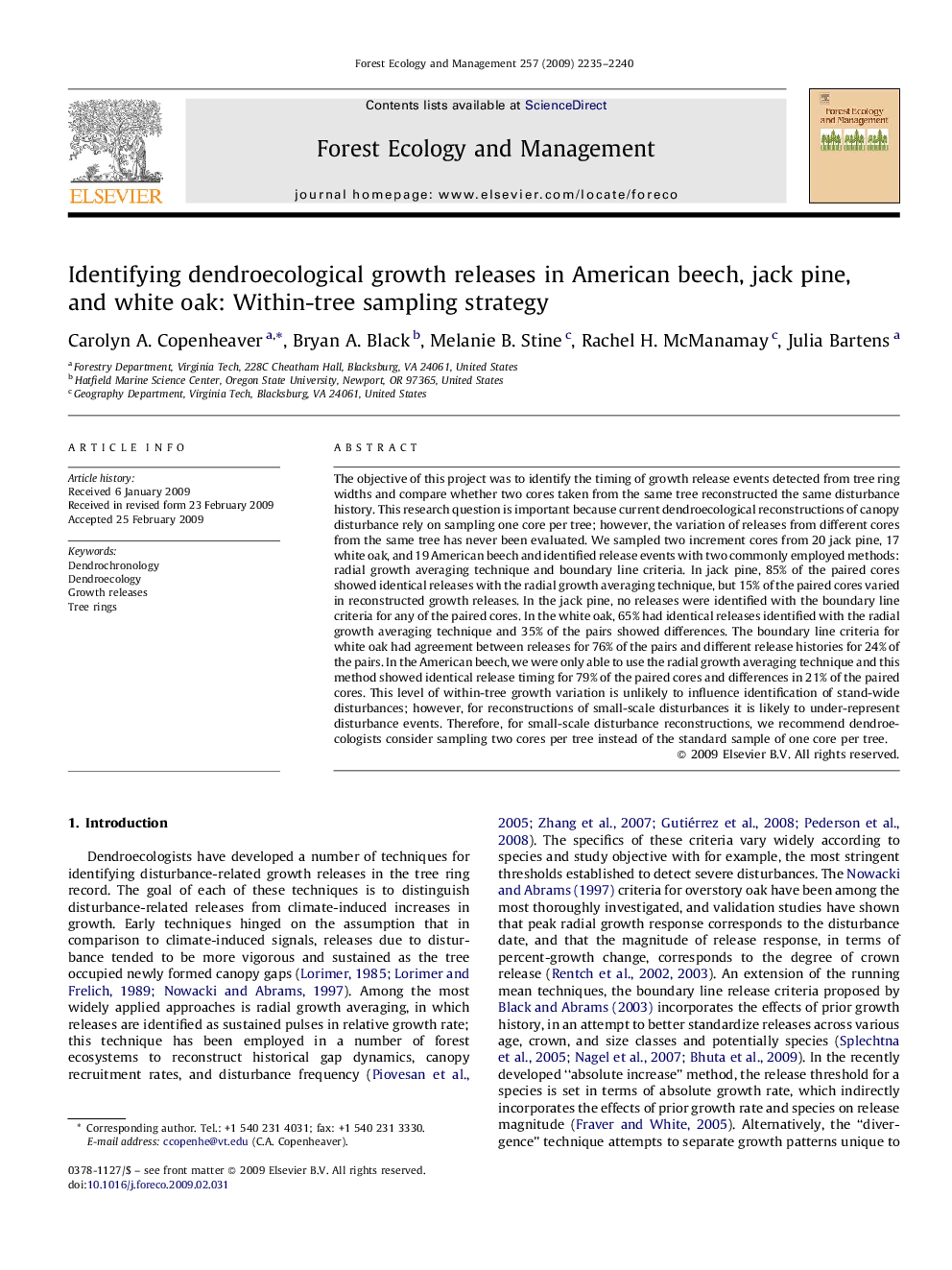| Article ID | Journal | Published Year | Pages | File Type |
|---|---|---|---|---|
| 88669 | Forest Ecology and Management | 2009 | 6 Pages |
The objective of this project was to identify the timing of growth release events detected from tree ring widths and compare whether two cores taken from the same tree reconstructed the same disturbance history. This research question is important because current dendroecological reconstructions of canopy disturbance rely on sampling one core per tree; however, the variation of releases from different cores from the same tree has never been evaluated. We sampled two increment cores from 20 jack pine, 17 white oak, and 19 American beech and identified release events with two commonly employed methods: radial growth averaging technique and boundary line criteria. In jack pine, 85% of the paired cores showed identical releases with the radial growth averaging technique, but 15% of the paired cores varied in reconstructed growth releases. In the jack pine, no releases were identified with the boundary line criteria for any of the paired cores. In the white oak, 65% had identical releases identified with the radial growth averaging technique and 35% of the pairs showed differences. The boundary line criteria for white oak had agreement between releases for 76% of the pairs and different release histories for 24% of the pairs. In the American beech, we were only able to use the radial growth averaging technique and this method showed identical release timing for 79% of the paired cores and differences in 21% of the paired cores. This level of within-tree growth variation is unlikely to influence identification of stand-wide disturbances; however, for reconstructions of small-scale disturbances it is likely to under-represent disturbance events. Therefore, for small-scale disturbance reconstructions, we recommend dendroecologists consider sampling two cores per tree instead of the standard sample of one core per tree.
